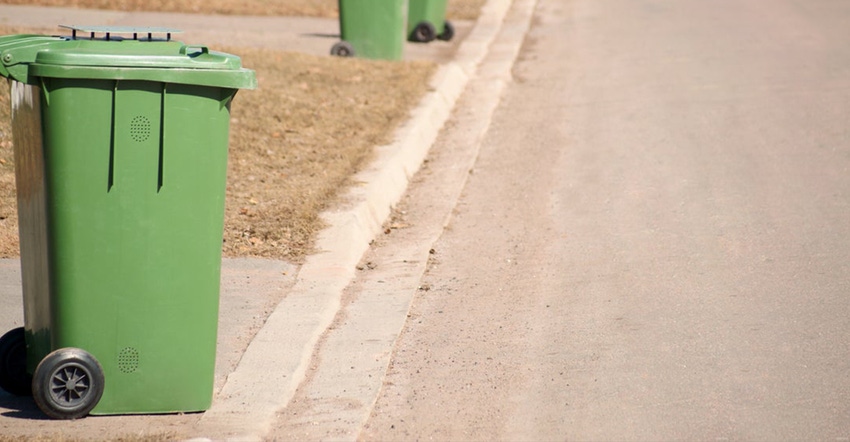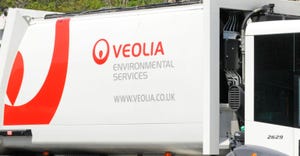WM and Dow Roll out Film Curbside Recycling
WM (formerly Waste Management) and Dow are running a curbside film and flexible plastics pilot in Hickory Hills, Ill., with plans to expand to other cities. If proven out at this trial site, the program is expected to divert more than 120,000 metric tons of plastic film and flexibles from landfills annually by 2025.

WM (formerly Waste Management) and Dow are running a curbside film and flexible plastics pilot in Hickory Hills, Ill., with plans to expand to other cities. If proven out at this trial site, the program is expected to divert more than 120,000 metric tons of plastic film and flexibles from landfills annually by 2025, to be sorted across 50 of WM’s automated residential single-stream operations. This sortation stage is key to maintaining integrity of materials to create a viable, finished, recycled product.
The Chicago-area pilot, offered to 3,500 residents, which began in October 2022 is recovering materials such as bread bags, shrink wrap, and dry-cleaning bags.
This first trial and the collections programs that are planned to follow aim to make headway on reducing a major waste and waste management infrastructure problem: currently, only 1.9 percent of U.S. households have access to curbside film collections, according to The Recycling Partnership.
“We saw an opportunity to fill in the gap where film processing is lacking. We have a lot of customers wanting this material. It can be turned into pellets for new bags and other applications. So, we are trying to increase recycling rates and find circular solutions for these films and flexibles,” says Brent Bell, vice president of Recycling for WM.
The waste corporation is leveraging its infrastructure to manage collections and sorting, while Dow is lending its expertise in material science and application development. The global chemical corporation’s motivation is largely fueled by its ambition to reach an internal sustainability target: commercialization of 3 million tons of circular and renewable products by 2030, including film and flexibles.
“To do this we need more PCR content. That’s why we kicked off this collaboration with WM. They are strong leaders in the market,” says Haley Lowry, Global Sustainability director at Dow.
Dow’s primary roles will be working to understand the quality of materials collected from pilot participants; trying to determine how to improve them to meet performance requirements; and helping to identify appropriate markets.
“We will determine, for instance, if we need to find ways to improve performance, like changing the materials’ composition. Does WM need to do additional sortation?” Lowry notes.
Before launch the partners focused on education to prepare the community for the new process and to ensure residents knew what to put in the bin. WM distributed flyers and reached out through social media with tailored messaging, telling residents their city was chosen for this pilot and asking for their participation.
Dow is working with its partners to facilitate community engagement and education to affect behavior change required to increase recycling. The company is testing the response to the communications sent to households and its impact on the quality of recovered materials.
Among key findings so far, Lowry says, is that consumers are putting the right materials in bins. There will be more details to share by the end of the pilot.
Meanwhile, the data collection phase is in full swing to identify and assess incoming materials.
The program’s materials collection component will not change as film and flexibles are added to the bin. Rather the focus is on the processing end, where automation has to come into play, Bell says.
Automation is intended to solve for a technical problem that happens when film comes into contact with separating screens at materials recovery facilities (MRFs). It wraps around equipment and causes downtime and disruptions.
Automated facilities have non wrapping screens with bigger discs to separate the material, preventing it from becoming tangled.
WM has committed to $800 million in investments to enhance recycling infrastructure for plastics through 2025, to include more technology to sort plastic film. And it took controlling interest in Avangard Innovative, now Natura PCR, in November 2022 to be able to work with more of these hard-to-recycle materials. Natura will produce pellets to incorporate into films and clear plastic wrap used in commercial applications, such as stretch wrap for pallets, furniture film, and grocery bags.
Sharing the perspective of Dow, who is a customer of Natura, Lowry says, “We are looking at new feedstocks to incorporate in new ways and new recycling technologies for responsible consumption and responsible production, which is top of mind for consumers and companies.
“Many of our customers have announced targets by 2025 and 2030 to have a certain amount of recycled content built into their packaging applications. We are looking at how to unlock supply to meet that demand for materials (including film and flexible plastics) that are now going into landfills or for incineration,” she says.
Dow continues to focus on film and flexible plastic packaging concepts. The corporation has eight innovation centers dedicated to designing, developing, and testing packaging ideas (like multilayered blown film lines and vertical form fill seal packaging) and ultimately prepares them for use.
Dow and WM are gearing up to run other film pilots that have been lined up to follow the Hickory Hills trial.
“These communities are excited about the prospect of expanding their recycling programs. You get good reception when they can add materials to their collections,” Bell says.
He anticipates need to do more than support jurisdictions’ waste management programs, especially as policies evolve requiring producers to incorporate minimal recycled content in packaging, and as more companies set sustainability goals.
“We have over $800 million invested in recycling [of multiple materials] but are especially focused on plastics, including film, because we anticipate high demand. We see good return for our shareholders,” Bell says, commenting he, like Lowry, anticipates increasing need for PCR.
As far as impact on waste management infrastructure, film collection through WM is expected to reach 8 percent of U.S. households by 2025.
About the Author(s)
You May Also Like




